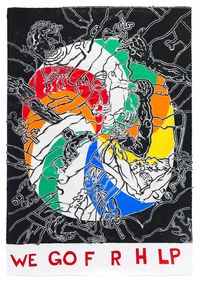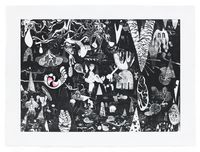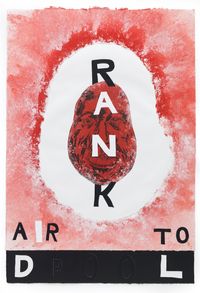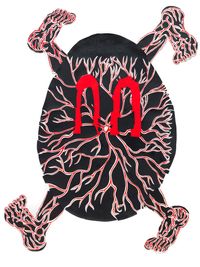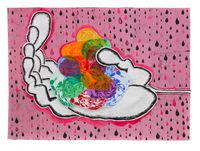Enter Trenton Doyle Hancock’s mythological world, a visual labyrinth packed with biomorphic forms of bones, emancipated bodies and sexual orifices oozing pink goo. Hancock’s self-invented epic combines the poetic ferocity of William Blake and the apocalyptic vision of Hieronymus Bosch to create characters of his ongoing visual battle between the forces of good represented by “Mounds” in their colour filled world, and the evil skeletal “Vegans” who live underground in a world of black and white. Each new work by Hancock is a part of a large narrative that presents the lives of these creatures from birth to eventual death.
Read MoreInvigorated by the grittiest residue of cultures, Hancock drew inspiration from his first foray into Asia during the residency at STPI. Trenton says, “Haw Par Villa is perhaps one of the strangest destinations on Earth - it is at once a place of teaching, therapy, and deposited demons and most of all it represents the extremes one will go to tell a story no matter how absurd.”
Hancock’s storytelling evolution takes place at STPI, where he incorporates new materials and elements into definitive works such as “The Impatience of Progress #1” that shows a black egg with four legs evocative of the Swastika symbol - Hancock negotiates its Western representation of dominance and its Eastern signifier of infinity in the birth of a form, that moves forward in a looping manner. The egg form recurs in the Hancock’s oval-shaped self portrait, which appears for the first time in this body of work.
Hancock says, “One of the special opportunities offered by STPI is the chance to re-interpret your work through the medium of paper-making where I discovered new configurations and usages for my icons.” These are evident in his densely layered, cast paper works and intricate, assembled collages of lithographs and etchings. Hancock’s epic tale translates into epic proportions with “Imported but Beautiful”, an artwork that spans up to three metres, featuring hands in larger than life scale, symbolic of its dualistic nature for construction and destruction.
Hancock makes powerful associations between word and image by writing isolated words like a caption to the image – works such as “Watchful”, “Graven” and “We Rebend” encourage viewers to decipher messages that can be polemical and confessional. Just as typography is part of Hancock‟s mental and visual game so are his recurring motif of the „eyes‟ in artworks that look back at the viewer, that can be engaging or confrontational.
Trenton Doyle Hancock is one of the most distinctive American artists of his generation, his portrayal of two conflicting, imaginary tribes are allegory of the omnipresent strife in the contemporary world. Hancock was brought up in Paris, Texas (a town Wim Wenders believed so irresistibly dark that he made a movie after it) and at age 25, he was one the youngest artist ever to be included in the Whitney Biennial in 2000. Hancock’s art had been adapted into ballet by Ballet Austin and he is featured on PBS Art: 21 artist documentary series.
Text courtesy STPI - Creative Workshop & Gallery.
